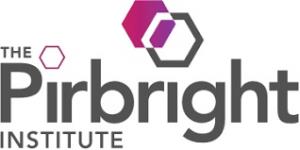 EGG-NEWS is in indebted to Dr. Eric Gingerich for circulating a report on a novel avian influenza vaccine currently under development by a research group at the Pirbright Institute in the UK.
EGG-NEWS is in indebted to Dr. Eric Gingerich for circulating a report on a novel avian influenza vaccine currently under development by a research group at the Pirbright Institute in the UK.
According Dr. Munir Iqbal head of the Avian Influenza Virus Group, the vaccine will comprise haemagglutinin (HA) from a specific strain of avian influenza tagged to be selectively captured by antigen-presenting cells of the recipient. The tag creates an affinity for the CD 83 protein on the antigen-presenting cells resulting in endocytosis. This stimulates elaboration of MHC II that through selective stages results in B cell proliferation to provide antibody production. Concurrently the tagged HA results in interleukin-2 release that activates natural killer cells.
 The research team have used H9 antigen derived from a low pathogenicity H9N2 virus in initial trials. Specific tagged HA antigen will be required for other strains including H5 and H7 that represent the greatest risk of highly pathogenic avian influenza in commercial chicken, turkey and duck flocks. According to Dr. Iqbal the antigen required for the vaccine can be propogated on insect tissue culture obviating the need to use chicken embryos.
The research team have used H9 antigen derived from a low pathogenicity H9N2 virus in initial trials. Specific tagged HA antigen will be required for other strains including H5 and H7 that represent the greatest risk of highly pathogenic avian influenza in commercial chicken, turkey and duck flocks. According to Dr. Iqbal the antigen required for the vaccine can be propogated on insect tissue culture obviating the need to use chicken embryos.
Initial trials suggest quantifiable antibody response stimulated the tagged HA vaccine but commercialization will be years in the future. In the interim, other research groups are evaluating alternatives to conventional inactivated oil emulsion vaccines using advanced technology including DNA vaccines. It is evident that the H5N1panornitic affecting Asia, Europe and North America will stimulate the development of an effective series of vaccines against both H5 and H7. This imperative is based on the increasing cost of stamping-out programs in an attempt to reduce the spread of HPAI. Control is becoming more costly to both the private and public sectors especially when annual or semi-annual campaigns are required.